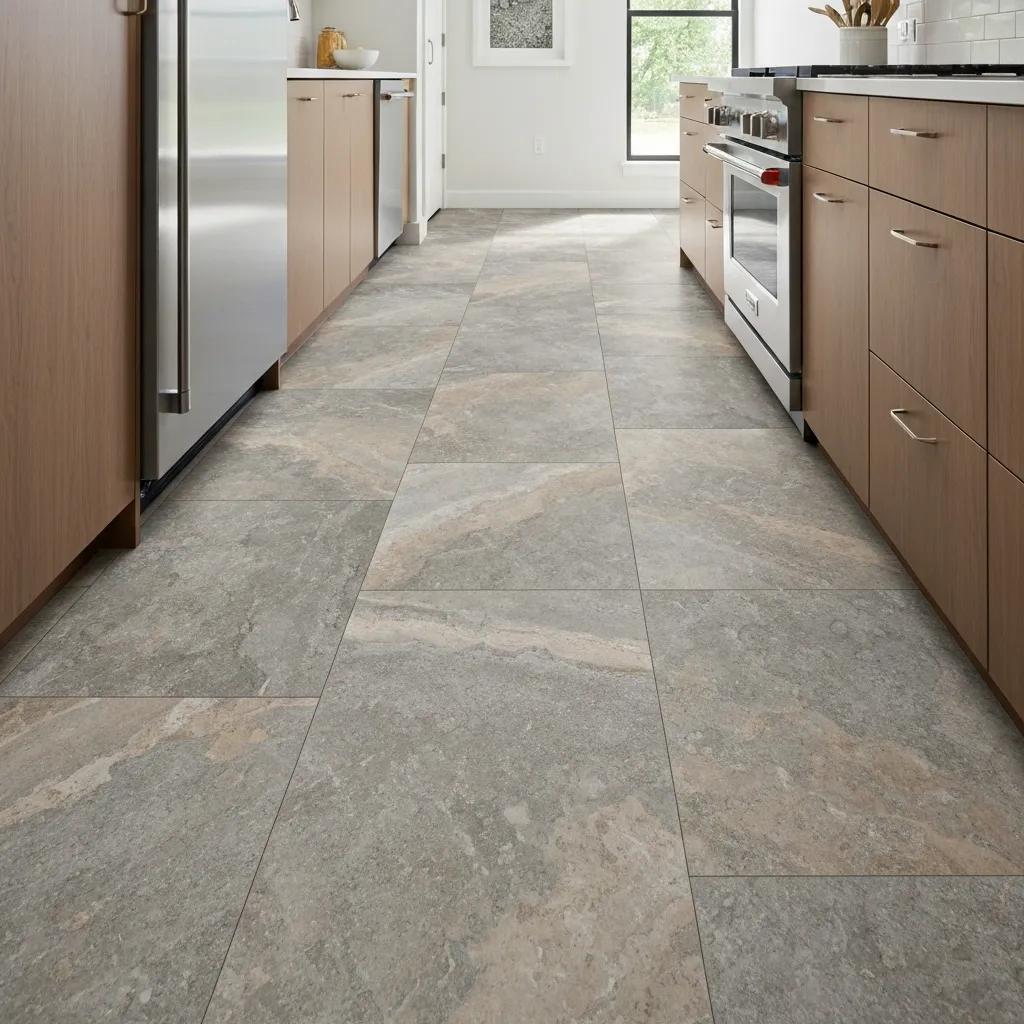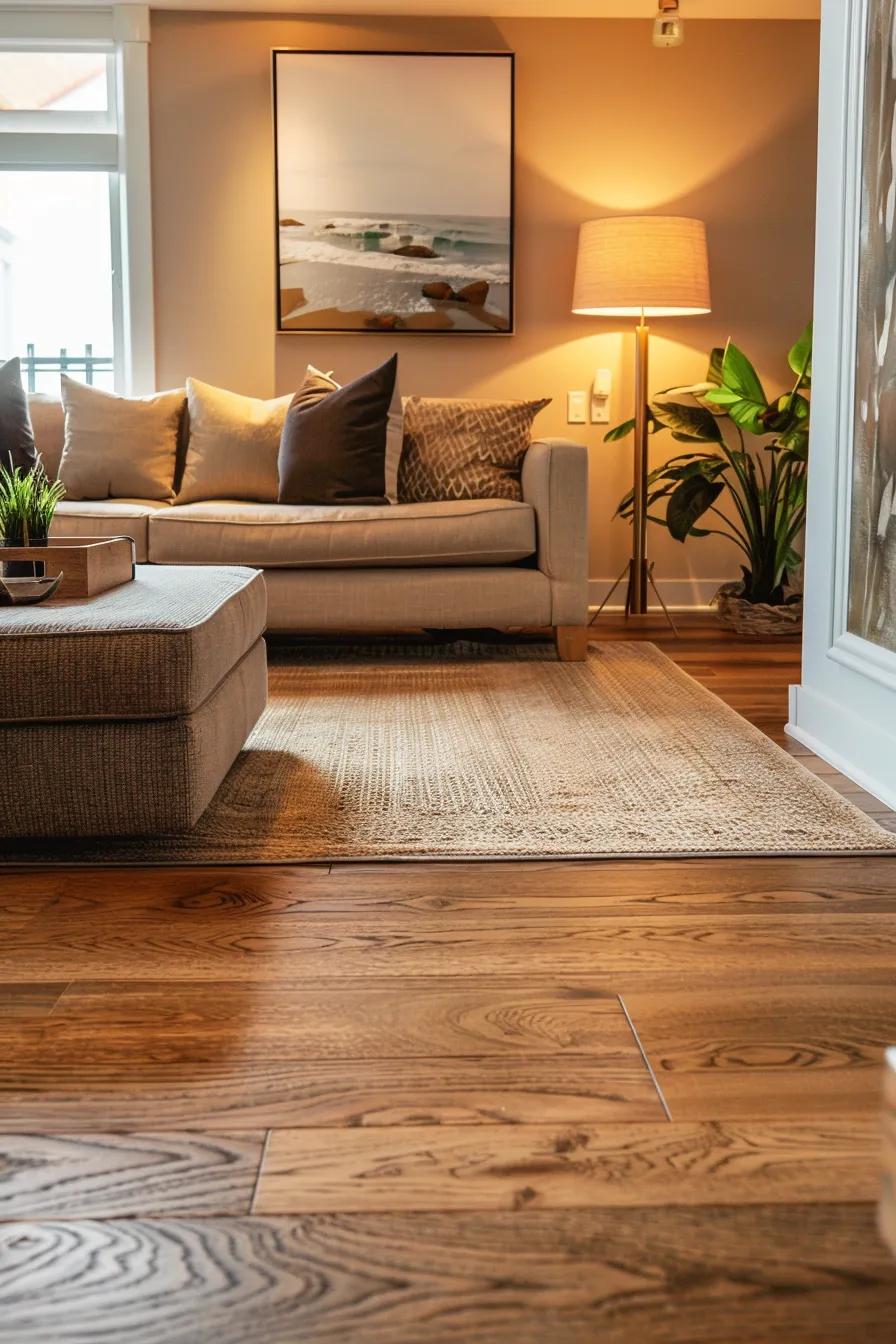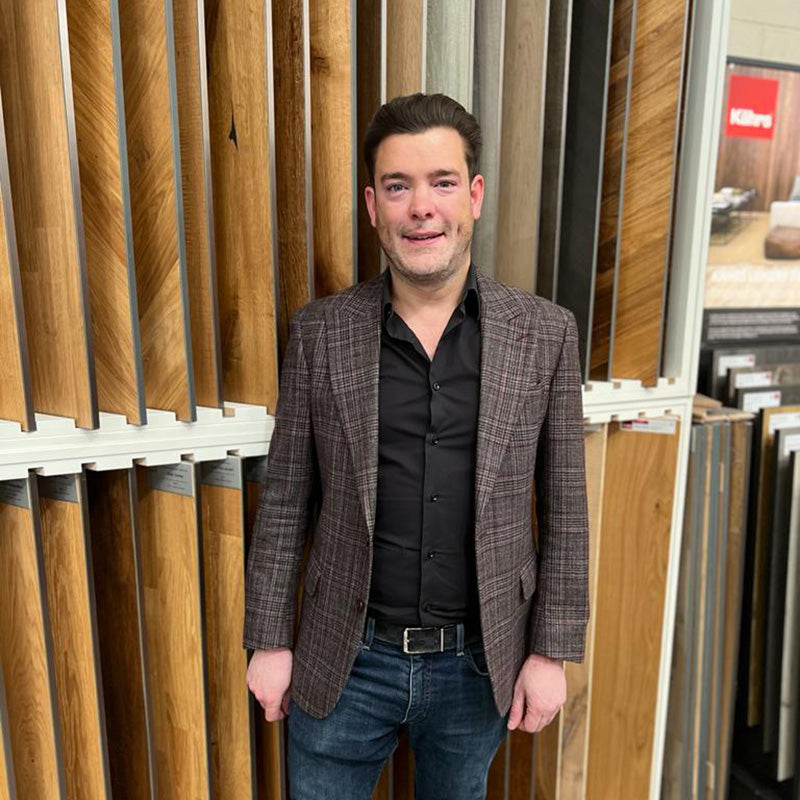How Flooring Affects Home Resale Value
Flooring is one of the first things buyers notice — it sets tone, suggests quality and can directly affect how quickly a home sells and the offers it attracts. This guide walks through how common floor coverings — from solid hardwood and engineered wood to luxury vinyl tile (LVT), tile, laminate and carpet — tend to influence resale value in the UK, and what to consider when planning renovations. Many sellers underplay how durability, upkeep and style interact with buyer expectations, so we link material features to likely return on investment (ROI), give room-by-room recommendations, and highlight 2024–2025 trends. You’ll find compact ROI comparisons, a refinishing vs replacement checklist, and practical staging and specification tips to help homes sell faster and for a better price.
Which Flooring Types Offer the Best Return on Investment for UK Homes?
Which floors deliver the best ROI depends on cost, what local buyers expect and how each room is used. Generally, solid hardwood, engineered wood and quality LVT lead the pack because they balance appearance with durability. Solid timber is often read as a premium finish, while engineered wood offers a timber look with easier installation options. Below we compare common choices by typical cost, durability and maintenance so you can judge likely value uplift before committing to works. The table summarises those trade-offs and the resale outcomes they tend to produce.
Different floor coverings combine upfront cost, lifespan and buyer appeal in distinct ways:
| Flooring Type | Typical cost (GBP/m²) | Durability | Maintenance |
|---|---|---|---|
| Solid hardwood | Medium–High | High (refinishable) | Medium (periodic refinishing) |
| Engineered wood | Medium | High (stable, moisture-resistant) | Low–Medium (occasional recoating) |
| Luxury vinyl tile (LVT) | Low–Medium | High (wear layer protection) | Low (easy cleaning) |
| Porcelain tile | Medium–High | Very High | Low (grout maintenance) |
| Laminate | Low | Medium | Low–Medium (replace when worn) |
| Carpet | Low | Low–Medium | High (cleaning, replacement) |
This comparison shows that high-durability, low-maintenance floors usually reduce perceived buyer risk and can support stronger offers. The sections that follow take a closer look at hardwood and engineered wood and explain why they often deliver strong ROI.
How Does Hardwood Flooring Impact Home Resale Value and ROI?

Solid hardwood frequently commands a price premium because it signals quality and longevity. Where original timber is well cared for — popular species like oak, correctly finished and in good condition — buyers often perceive a clear value uplift and homes tend to move faster. Hardwood’s appeal is practical as well as visual: the option to refinish worn boards extends lifespan and preserves appearance, which directly supports ROI. When weighing hardwood, consider refinishing costs versus replacement, and remember species, plank width and finish all shape buyer preference. That decision naturally leads into engineered wood, which trades some traditional features for wider applicability and simpler installation.
What Are the Benefits of Engineered Wood Flooring for Property Value?
Engineered wood gives you the look of timber with improved dimensional stability and the ability to fit over more subfloors — a real advantage in many modern UK homes. It usually costs less than solid timber while looking authentic, so its ROI often beats laminate and suits sellers who want timber appeal without the higher installation or moisture limitations of solid boards. For ground-floor living, basement conversions or properties where humidity is a concern, engineered wood is a practical choice that buyers recognise and often reward with better offers.
Engineered Flooring: Selection and Performance of Timber Species
Choosing a timber species for flooring has traditionally hinged on market popularity and hardness to resist dents. Those factors are increasingly complicated by limited availability of some native species and tighter harvesting rules. Laboratory hardness tests can rank species, but they don’t always predict real-world performance — especially for engineered products where core construction matters as much as surface veneer.
Engineered flooring from low-density plantation hardwood: Evaluation of long-term in-service trials, KP Millaniyage, 2024
Once you’ve narrowed the best-performing materials, the next step is comparing product ranges and prices from retailers. To get the best value, compare specifications, warranties and aftercare options across suppliers before you buy.
How Does Luxury Vinyl Tile Influence Home Value and Buyer Appeal?

Luxury vinyl tile (LVT) can lift value by offering convincing timber or stone looks at lower cost, with strong resilience and water resistance that many buyers appreciate. LVT performs well in kitchens, utility rooms and ground-floor living spaces where durability and easy maintenance matter, and buyer familiarity with premium vinyl has grown in recent years. When specified in neutral, high-quality designs and fitted properly, LVT often delivers solid ROI. Below we explain LVT construction and set realistic expectations so you can compare it to hardwood and laminate.
Why Is LVT Considered a Durable and Water-Resistant Flooring Option?
LVT’s durability and moisture tolerance come from a layered build-up: a protective wear layer, a printed design layer and a dense core. The wear layer resists abrasion and staining, while the core adds stability and water resistance. Higher-grade LVT carries warranties that reflect long service life, which reassures buyers about ongoing costs. Because it’s tougher than many timber finishes and easy to clean, LVT is a practical choice for high-traffic and wet-prone rooms and can be specified to maximise resale appeal.
What ROI Can Homeowners Expect from Installing Luxury Vinyl Tile?
LVT’s ROI typically sits between laminate and engineered wood in many UK markets. Good-quality LVT, installed with tight joints and proper underlay, can return strong value because it combines contemporary looks with low lifecycle costs. Poor-quality vinyl or sloppy fitting, by contrast, can harm perceived value — so spending a bit more on premium LVT and competent installation usually protects ROI. While premium solid timber may still top values in the very highest markets, LVT commonly outperforms laminate and carpet for mid-market buyers focused on durability and low maintenance.
Key LVT strengths to guide specification:
- Moisture resistance: Ideal for kitchens and utility rooms where timber is risky.
- Durability: A robust wear layer limits visible wear in busy zones.
- Design versatility: Realistic wood and stone visuals at lower cost.
These benefits explain LVT’s growing appeal. Next, we compare tile, laminate and carpet so you can judge trade-offs for different rooms and buyer types.
What Are the Pros and Cons of Tile, Laminate, and Carpet Flooring for Resale Value?
Tile, laminate and carpet each serve different resale niches. Porcelain and natural stone convey a premium, hard-wearing finish for wet rooms, laminate gives a budget-friendly wood-look option for quick turnarounds, and carpet remains a practical choice for bedrooms where warmth and sound insulation matter. Match material strengths to room use and buyer expectations to get the best ROI from any upgrade.
How Do Tile and Natural Stone Flooring Enhance Kitchen and Bathroom Value?
Tile and natural stone add value in kitchens and bathrooms through excellent water resistance, a premium feel and long-term durability that lowers buyer concerns about near-term repairs. Properly installed porcelain tile offers a high-spec tactile experience and lasting performance; natural stone can add cachet but may need specialist sealing and extra maintenance. Because buyers prioritise functional, low-risk finishes in wet rooms, a well-executed tile scheme often gives one of the best returns on renovation spend.
Can Laminate and Carpet Flooring Provide Good ROI for Home Sellers?
Yes — in the right situations. Laminate is ideal for short-term flips, rental properties and budget-conscious sellers: it looks good for relatively little cost. Neutral carpet works well in bedrooms where softness and thermal comfort matter. Quality matters: higher-grade laminate with textured surfaces and proper edges presents better to buyers than cheap shiny options, and neutral, stain-resistant carpets with decent underlay reduce perceived rework for incoming occupants. For mid-market homes and investor portfolios, laminate or carpet can be economical ways to refresh interiors — as long as choices are neutral and professionally installed.
Quick pros summary:
- Tile/Natural Stone – Pros: Durable, water-resistant, premium perception.
- Laminate – Pros: Low cost, fast installation, convincing wood-look options.
- Carpet – Pros: Warmth, sound insulation, cost-effective for bedrooms.
How Do Flooring Attributes Like Durability, Maintenance, and Aesthetics Affect Resale Value?
Durability, maintenance and aesthetics are the three attributes that most affect whether flooring adds net value. Durability lowers the risk of imminent replacement, maintenance affects ongoing costs and effort, and aesthetics drive first impressions and buyer fit. Together they shape buyer confidence and how much buyers are willing to pay. The table below maps specific attributes to resale impacts so you can weigh trade-offs against your renovation budget and expected ROI.
| Attribute | Characteristic | Impact on Resale |
|---|---|---|
| Durability | Expected lifespan and resistance to wear | Boosts buyer confidence and reduces discounts for imminent replacement |
| Water resistance | Tolerance to moisture and spills | Essential in kitchens and bathrooms; improves functional appeal and value |
| Maintenance | Frequency and cost of upkeep | Low-maintenance floors attract wider buyer pools and higher offers |
| Aesthetics | Colour, texture and style match | Neutral, versatile styles widen buyer appeal and speed the sale |
This attribute map makes clear that durable, low-maintenance and neutrally styled floors typically deliver the best resale outcomes. The next sections dig into durability measures and maintenance regimes to help prioritise specifications.
Why Is Durability Crucial for Flooring That Adds Property Value?
Durability matters because floors that last — or can be restored — reduce buyer concessions and lower perceived ownership costs. Durable materials such as porcelain tile, engineered wood and high-grade LVT create fewer immediate replacement worries, and having warranties or documented lifespans to show during viewings can reassure prospective buyers. Practical durability markers — wear-layer thickness for LVT or plank thickness and sanding cycles for timber — are useful guides when specifying floors with resale in mind.
How Does Maintenance Impact Buyer Preferences and Flooring Longevity?
Maintenance influences buyer choice because many purchasers prioritise low-effort finishes they can live with straight away. Easy-to-clean surfaces like LVT and porcelain tile rate highly with time-poor families and professionals, while tired or stained carpet often lowers offers and prompts immediate replacement. Presenting recent professional cleaning or a clear maintenance history during viewings can lift perceived value, so maintenance strategy should be part of pre-sale preparation. With upkeep covered, it’s worth looking at how market trends and sustainability are shaping buyer preferences for 2024–2025.
What Are the Latest UK Flooring Trends and Buyer Preferences for 2024-2025?
For 2024–2025 UK buyers are favouring durability, sustainability and neutral designs that help them imagine themselves in a space. Resilient floors like LVT continue to grow in popularity alongside steady demand for timber looks. Sustainability now plays a notable role — low-VOC finishes, responsibly sourced timber and recyclable materials resonate with many buyers and can be persuasive if supported by certification. Design-wise, neutral palettes, wider-plank oak looks and natural textures remain strong because they suit both modern and traditional interiors and broaden buyer appeal.
How Is Sustainability Shaping Flooring Choices and Home Resale Value?
Sustainability affects choices by signalling responsibility and quality — certifications such as chain-of-custody labels or low-VOC declarations can improve buyer perception and support value, particularly with eco-aware purchasers. Reclaimed timber or rapidly renewable options like bamboo add storytelling value for some buyers. Balancing cost with visible sustainability credentials can therefore deliver both ethical benefits and resale advantages.
Which Flooring Styles Are Most Popular Among UK Homebuyers Today?
Neutral tones, wide-plank oak looks and textured natural finishes remain top picks because they create bright, airy spaces and suit a wide range of decor. Herringbone and chevron still appeal in higher-end homes for their classic character, while consistent flooring across open-plan living areas makes spaces feel larger and more cohesive. Highly bespoke or bold finishes can work in specialist markets but often narrow the buyer pool in mainstream sales, so use them selectively.
How Can Homeowners Maximise Resale Value Through Flooring Renovations?
To maximise resale value, focus improvements on high-impact rooms, choose materials aligned with buyer expectations and decide between refinishing and replacement based on condition and cost. Prioritise entrances, living areas and kitchens first — these rooms shape first impressions and usually return the strongest marginal value uplift. Below is a practical room-by-room guide with recommended flooring, typical cost ranges and expected ROI to help you allocate budget where it will matter most.
| Room | Recommended Flooring | Cost Range (GBP) | Expected ROI % |
|---|---|---|---|
| Entrance / Hall | Engineered wood or durable tile | 40–100 /m² | 60–90% |
| Living Area | Solid or engineered wood | 50–120 /m² | 60–85% |
| Kitchen | Porcelain tile or high-grade LVT | 35–110 /m² | 50–80% |
| Bathroom | Porcelain tile or waterproof LVT | 30–100 /m² | 40–70% |
| Bedrooms | Neutral carpet or engineered wood | 20–70 /m² | 30–60% |
This room-level guidance highlights where investment typically has the most impact and helps prioritise limited budgets. The following sections explain when refinishing beats replacement and how room-specific choices influence overall property value.
When Is Refinishing Hardwood Flooring More Valuable Than New Installation?
Refinishing makes sense when boards are structurally sound, the wear layer is thick enough for sanding and damage is mainly cosmetic. Refinishing restores appearance at a fraction of replacement cost, preserves original character that buyers often value and usually completes faster. Check plank thickness, available sanding cycles, presence of deep gouges or water damage and subfloor stability — if these are satisfactory, refinishing typically offers higher ROI and less disruption than full replacement.
How Do Room-Specific Flooring Choices Affect Overall Property Value?
Room-specific choices matter because buyers weight rooms differently: kitchens and living spaces have outsized influence on overall impressions, while bedrooms and utility areas affect comfort and practicality. A consistent flooring scheme across open-plan areas can make a home feel larger and more premium, and using the right durable materials in wet rooms reduces buyer objections. Tailor materials to room use — moisture-resistant LVT in kitchens, tile in bathrooms and warm engineered wood in living rooms — to get the best mix of function and appeal.
Practical next steps to convert renovation work into buyer confidence and stronger offers:
- Assess condition: Inspect existing floors and list repairs or replacements needed.
- Prioritise rooms: Spend first on entrance, living area and kitchen, then secondary rooms.
- Specify neutrals: Choose neutral colours and durable finishes to widen buyer appeal.
- Obtain quotes: Get multiple installation quotes and compare warranty terms.
- Document all works and maintenance: Keep receipts and warranties to show during viewings.
- Stage the space: Present floors clean, sealed and visually cohesive for viewings.
- Highlight sustainability where relevant: Point out low-VOC finishes or responsibly sourced timber.
Following these steps helps turn renovation spend into clear evidence of value for prospective buyers and can support higher offers.




